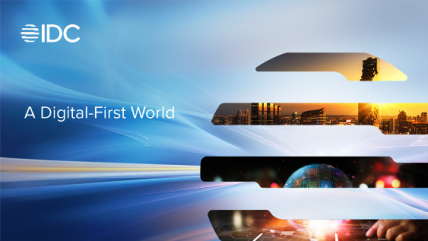Jyoti Lalchandani, Group Vice President & Regional MD (META) at IDC examines the digital transformation imperative and its value to the organisation.
The 14th Edition of IDC South Africa CIO Summit 2022 was a landmark event for several reasons. The first after the global pandemic, it emerged into a landscape that has been transformed by innovation, digital transformation and informed CIOs. Organisations have radically transformed with the majority bringing digital transformation projects forward by at least two years. As a result, they’ve benefitted from newfound efficiencies, products and services as digital transformation improves decision-making and drive value. It has also derived customer, partner and employee satisfaction.
RELATED: 5G, emerging technologies are key regulatory focus in Sub-Saharan Africa – IDC
This also means that the key performance indicators (KPIs) of the CIO and head of IT have been evolving. Over the past few years, most have been focused on managing cost and risk in terms of operational functionality, managing downtime, provisioning services, and making sure the lights stay on. Around 65% of CIOs are focused on IT operational metrics such as system uptime and downtime and maintenance, while cybersecurity metrics (56%), digital transformation metrics (52%), and organisational metrics (41%) have taken up percentage points. Digital transformation, security and other digital imperatives lead the mix in terms of KPIs, particularly in South Africa, with cost management metrics (52%) and compliance metrics (40%) remaining a priority.
The second broad trend that has emerged over the past two years is digital resilience. The initial focus at the start of the pandemic was on business continuity – access to applications and infrastructure – but organisations have rapidly turned to digital resilience to capitalise on changing market conditions. It’s quite clear that the world is not going back to where it came from, so investing in innovations and services has been a fundamental shift for most companies. The goal is to invest in digital capabilities that are capable of driving growth and preparing the business for future disruption.
For a third of organisations in South Africa, however, this shift has been digitally innovative. They have recognised that it is a unique set of conditions that offer an opportunity to grow the business and its portfolio and have invested in digital capabilities that allow them to capitalise on them. This ties into another key theme that has emerged – hybridity.
Hybridity is not just hybrid work or hybrid cloud. It is the hybridisation of all elements that make up every part of the ecosystem, from customer engagement that is both digital and physical, through to home and office frameworks, cloud and beyond. Organisations will likely drive both organic and inorganic revenue streams from ecosystem-based partner models that tap into the concepts of digital resilience, hybridisation, and innovation. These models are focused on building holistic environments that connect the dots to drive innovation and revenue. That transforms as they go. And that supports organisations in achieving their digital, transformation, compliance, and environment, social, and governance (ESG) goals.
The future is a blend of hybrid technology platforms in hybrid multi-cloud environments that leverage multiple forms of technology to build a sustainable organisation. A future where IT operations, how products and services are sourced, access to the workforce, and crowdsourced skills and solutions are all hybrid in nature and driven by design.
As the organisation puts a digital-first strategy in place, it has to address its engagements with a customer base that is already digital-first and enabled. The goal is to unpack how to get a 360-degree view of customer expectations, especially when these have drastically changed. The reality is that by 2023, one in two companies will generate more than 50% of revenue from digital products and this should be a priority consideration when it comes to digital transformation planning and investment.
In South Africa, the digital-first customer strategy should be focused on owning the omnichannel and enhancing experiences on digital platforms, expanding capabilities and engaging with customers in a digital-first reality. It is a unique opportunity for organisations to capitalise on customer behaviour in South Africa and globally, accelerating digital resilience and a digital-first approach that allows for rapid innovation and transformative ecosystems of engagement. Companies need to collaborate with external resources, take a more consistent approach to drive innovation, and focus on smart ways to address the skills challenge. Each of these steps takes the organisation closer to achieving its goal of being digital-first, and digitally-ready.

































